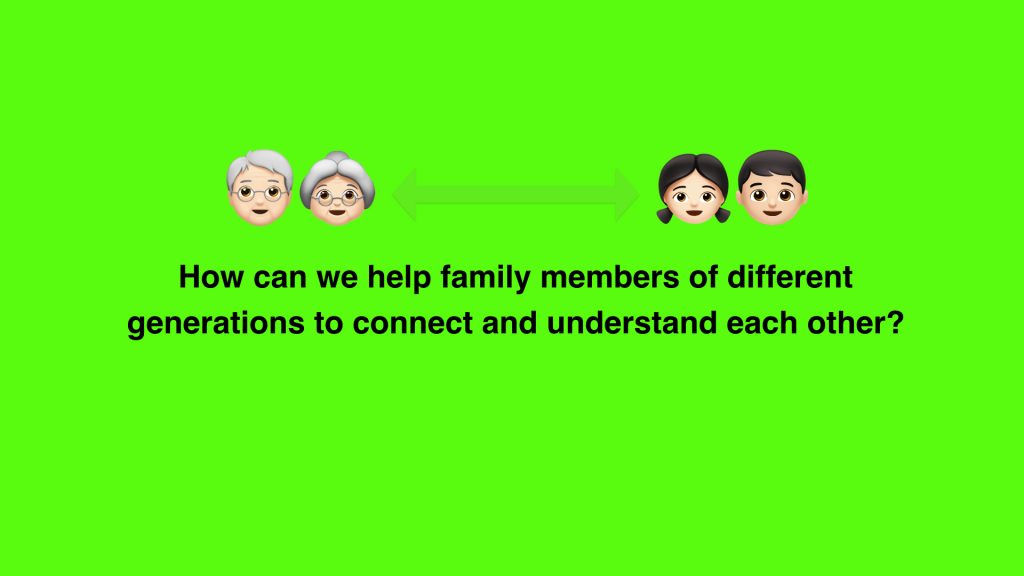A good family relationship is based on the communication between family member, and the process of communication is also a mode of interaction with the family. Many researchers actively exploring communication skills between family, including by family communication surveys prepared (Bienvenu Sr, 1969) Bienvenu, McLeod and Chaffee establishment of Family Communication Pattern Scale(McLeod & Chaffee, 1972). Olson its family function theory has developed two communication-related measurement tools and parent-child, “open communication Scale” and “problem-based communication Scale”(Barnes & Olson, 1985), etc.
After doing some research on above family communication scale(Barnes & Olson, 1985), I have decided to do questionnaire with participant before playing the board game. Because this can create a comparison, you can see how much the game really helps communication
This study uses the Family Communication Scale to evaluate the interaction of members during the game. The content of family communication assessment includes: listening skills; speaking skills; self-disclosure; continuity tracking; respect, plus overall satisfaction with family communication, a total of 15 questions. The calculation method is 1-5 points, 1 is very dissatisfied, 5 is very satisfied. According to the original questions of FCS, this research was revised into a questionnaire suitable for this research. Before playing the game, fill out the questionnaire and calculate the family communication score based on the evaluation criteria.
After completing the questionnaire, a 30-minute game will begin. After the game, there will be a 2-3 minute interview. In order to consider that participants may lie and are unwilling to tell their true feelings, the game and interview process will all be recorded by video so that they can record the most real reaction when they communicate.
QUESTIONNAIRE (before playing game)2-3min
I am satisfied with the current way of communicating with family members 1 2 3 4 5
I think my family members are good listeners 1 2 3 4 5
My family members and I can express each other’s emotions 1 2 3 4 5
My family members and I can discuss each other’s ideas 1 2 3 4 5
My family members and I will truly express our feelings 1 2 3 4 5
My closeness with family members 1 2 3 4 5
The quality of my communication with family members 1 2 3 4 5
Ability of family members to reduce conflict 1 2 3 4 5
Fairness in handling disagreements with family members 1 2 3 4 5
Degree of mutual care with family members 1 2 3 4 5
I hope that my family members will be willing to listen to my thoughts 1 2 3 4 5
I hope my family members will share with me when they have information 1 2 3 4 5
I hope my family members to treat me as a friend 1 2 3 4 5
I hope my family members will be willing to tell their thoughts 1 2 3 4 5
I hope my family members can refer to my suggestions 1 2 3 4 5
interview question(after playing game)2-3min
- What did you learn?
- What was the most surprising thing you learned about someone else?
- Did you lie in the game just now?
- How will you work towards making changes/improvements?
Bibliography
Bienvenu Sr, M. J. (1969). Measurement of parent-adolescent communication. Family Coordinator.
McLeod, J. M., & Chaffee, S. H. (1972). The construction of social realty. In J. T.Tedeschi (Ed.), The Social Influence Process.
Olson, D. H., & Barnes, H. (2004). Family communication. FACES IV Package.Minneapolis, MN: Life Innovations, Inc
